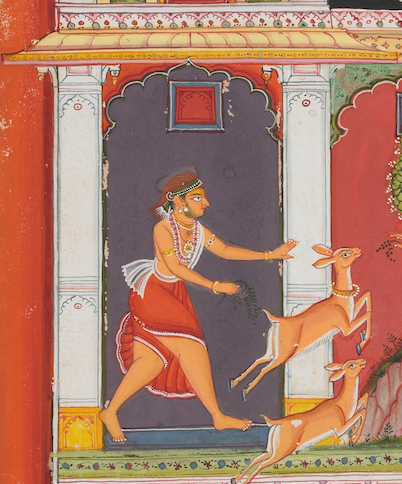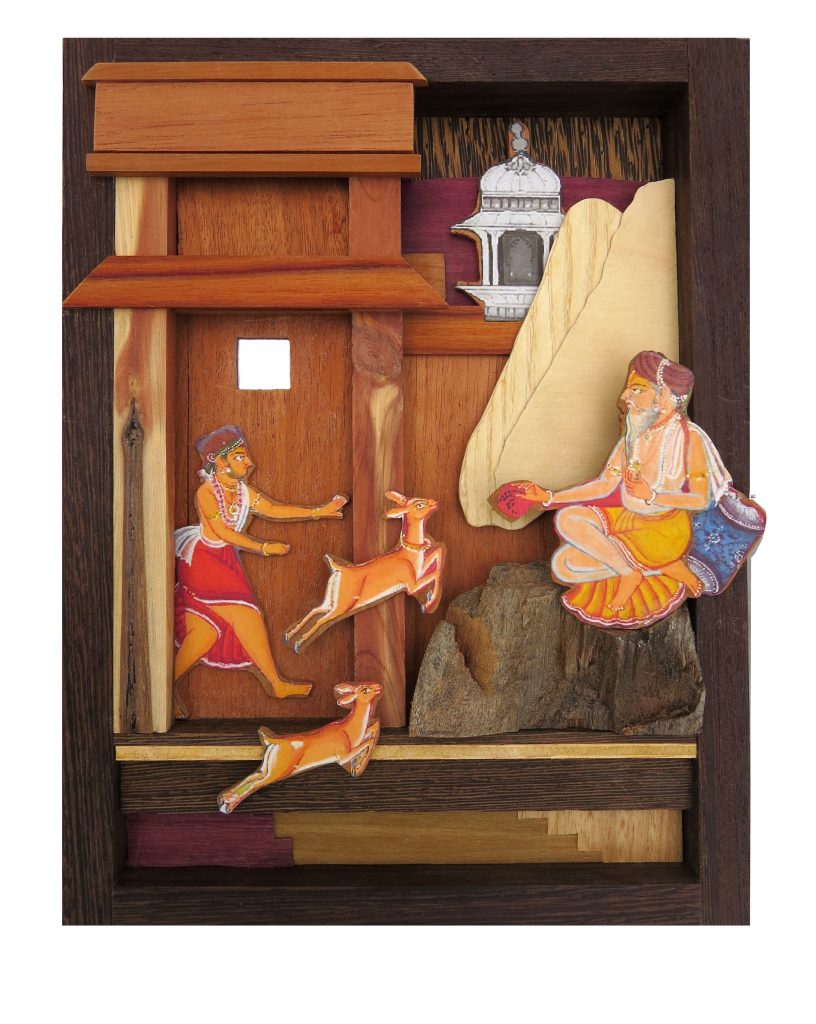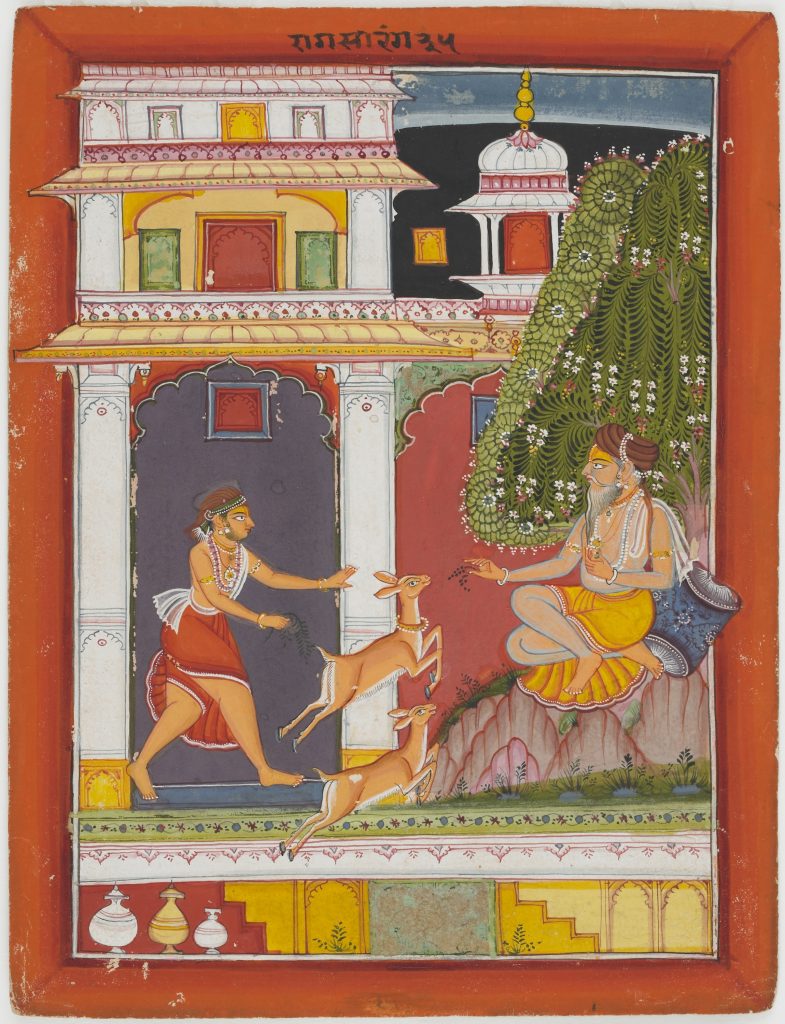Sarang Raga
Sarang Raga from the Sirohi Ragamala
Attributed to the Sirohi Master
India, Rajasthan, Sirohi, ca. 1680-1690
Opaque watercolor and gold on paper
Courtesy the Freer Gallery of Art, Smithsonian Institution, Washington, D.C.: Purchase — Charles Lang Freer Endowment, F1992.18
An earlier version of the Sarang Raga in the collection of the National Museum of Asian Art is in the Victoria and Albert Museum. Almost identical, it was originally described as a disputed work of art or as possibly a simple copy, is now classified as an earlier version. Click HERE to view.
A more recently discovered ragamala series, containing yet another near identical Sarang Ragini, was sold at auction in 2017. Click HERE to view.
Architectural depth is shown by the overlapping of elements, hence the pavilion on the left is closer to the viewer than the wall behind the ascetic. The man on the rock is on the same plane as the younger man and is therefore also in front of the building. The gazelle are closest to the viewer as they overlap all other elements. Interestingly, the artist plays with the viewer’s trust, because the roofline of the pavilion and senior ascetic’s cushion overlap the frame creating a sense of the unreal.

Indian palace architecture of this period featured enclosures within enclosures. In a palace, the visitor moves from public areas to progressively more private and enclosed areas, the most enclosed being the most exclusive. Rajasthani architecture also incorporates controlled encounters with nature within interior courtyards that contrast with the unattended nature found outside. Many ragamala paintings are set within such courtyards.
In theVilaval Ragini, depth is also shown by the addition of receding lines to simulate edges moving away from the viewer. In the Sarang Raga, the section behind the feet of the younger ascetic is a floor raised as if being looked down upon. The absence of this floor makes the figure float or pivot precariously.
In many ragamala paintings the figures are disproportionately large in comparison with the buildings. To show them in proportion would lessen their importance and make them appear insignificant. In the Sarang Ragini, this problem was solved by painting the first floor of the building at a realistic size, whereas the upper floors are reduced as if seen at a distance.

Depth and perspective in ragamala paintings can be better understood by trying to visualize them as three-dimensional objects. This sculptural work recreates the Sarang Raga in a manner that demonstrates how depth can be implied by layering visual elements. The work is by John Mors and is made of aromatic cedar, birch ply, black walnut, bloodwood, canarywood, cherry, eucalyptus, mahogany, Spanish cedar, and wenge (2020).
